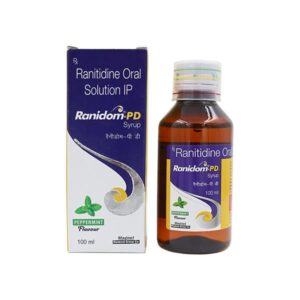SIMETHICONE + MAGALDRATE + DOMPERIDONE
Simethicone: Simethicone is an over-the-counter medication commonly used to relieve symptoms associated with excess gas in the digestive tract, including bloating, flatulence, and discomfort. It belongs to a class of drugs known as antifoaming agents.
The exact mechanism of action of simethicone is not fully understood, but it is thought to work by reducing the surface tension of gas bubbles, causing them to merge and be expelled more easily. This helps to alleviate symptoms of gas and bloating.
Simethicone is available in various forms, including chewable tablets, capsules, liquid drops, and oral suspension. The recommended dose for adults and children over 12 years old is usually 40 to 125 mg taken as needed after meals and at bedtime. For children aged 2 to 12 years old, the dose typically ranges from 20 to 40 mg.
Simethicone is generally considered safe and well-tolerated, with few reported side effects. However, some individuals may experience mild gastrointestinal symptoms such as diarrhea, constipation, or nausea. Allergic reactions to simethicone are rare but can occur. If any unusual or severe side effects are experienced, it is important to consult a healthcare professional.
It is worth noting that simethicone is not absorbed into the bloodstream and therefore has no direct impact on other medications. It is generally considered safe to use simethicone with other medications. However, it is always a good idea to consult a healthcare professional or pharmacist for any specific concerns or interactions with other medications.
Magaldrate: Magaldrate is an oral antacid medication primarily used to relieve symptoms associated with excess stomach acid, such as heartburn, indigestion, and upset stomach. It is sometimes prescribed in combination with other drugs to treat stomach or intestinal ulcers.
Magaldrate works by neutralizing the excess acid in the stomach. It does so by reacting with the gastric acid to form magnesium chloride and aluminum hydroxide. This reaction helps to reduce the acidity in the stomach, providing relief from acid-related symptoms.
The recommended dose of magaldrate can vary depending on the individual’s age, condition, and the severity of symptoms. Generally, the usual adult dose is 400-800 mg, taken 30 minutes to 1 hour after meals and at bedtime. It is important to follow the instructions provided by the healthcare provider or follow the dosage recommendations mentioned on the product label.
Common side effects associated with magaldrate include constipation or diarrhea, loss of appetite, nausea, vomiting, and stomach cramps. These side effects are usually mild and transient. However, if they persist or worsen, it is advisable to consult a healthcare professional. Rarely, allergic reactions may occur, including rash, itching, swelling, severe dizziness, or trouble breathing. In such cases, immediate medical attention should be sought.
Magaldrate may interact with other medications or supplements, so it is essential to inform the healthcare provider about all the current medications being taken to avoid potential interactions.
It is important to note that this description is for informational purposes only, and it is always recommended to consult a healthcare professional or pharmacist for specific dosage instructions, side effects, and any other concerns related to using magaldrate.
Domperidone: Domperidone is a medication commonly used to relieve symptoms related to gastrointestinal disorders such as nausea, vomiting, bloating, and heartburn. It belongs to a class of drugs called dopamine antagonists.
The mechanism of action of domperidone involves blocking dopamine receptors in the brain’s chemoreceptor trigger zone, which helps prevent nausea and vomiting. It also increases the movement or contractions of the stomach and intestines, allowing food to pass through more easily.
Domperidone is typically available as oral tablets or suspension. The recommended dose for adults and adolescents above 12 years of age is 10-20mg, to be taken three to four times a day before meals and at bedtime. The dose for children depends on their weight and should be decided by a healthcare professional. It is important to take domperidone exactly as prescribed and to follow the recommended dosage.
Like any medication, domperidone may cause side effects. Common side effects include headache, dizziness, dry mouth, abdominal cramps, diarrhea, and rash. These side effects are usually mild and often resolve on their own. However, if they persist or worsen, it is important to consult a healthcare professional. In rare cases, domperidone may cause serious side effects such as irregular heartbeat, fainting, or allergic reactions. If any of these occur, medical help should be sought immediately.
Domperidone may interact with other medications, so it is crucial to inform your healthcare provider of any other drugs you are taking. It is also important to note that domperidone is contraindicated in patients with pre-existing heart conditions or abnormal heart rhythms, and its use should be avoided during pregnancy and breastfeeding unless recommended by a healthcare professional.
Overall, domperidone is a widely used medication for gastrointestinal-related symptoms. It offers relief by blocking dopamine receptors and enhancing stomach and intestine movements. However, it is essential to follow the prescribed dose, be aware of potential side effects, and consult a healthcare professional if needed.


